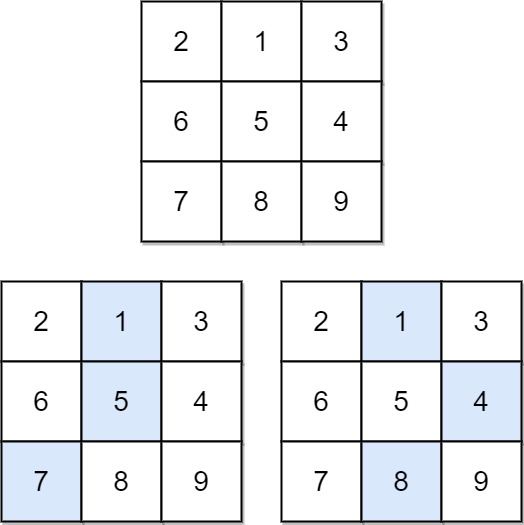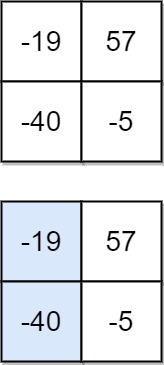931. Minimum Falling Path Sum
Description
Given an n x n array of integers matrix, return the minimum sum of any falling path through matrix.
A falling path starts at any element in the first row and chooses the element in the next row that is either directly below or diagonally left/right. Specifically, the next element from position (row, col) will be (row + 1, col - 1), (row + 1, col), or (row + 1, col + 1).
Example 1:

1 | Input: matrix = [[2,1,3],[6,5,4],[7,8,9]] |
Example 2:

1 | Input: matrix = [[-19,57],[-40,-5]] |
Constraints:
n == matrix.length == matrix[i].length1 <= n <= 100-100 <= matrix[i][j] <= 100
Hints/Notes
- 2024/07/09
- dp
- 0x3F’s solution(checked, we can save some space with a array of size n + 2)
Solution
Language: C++
1 | class Solution { |